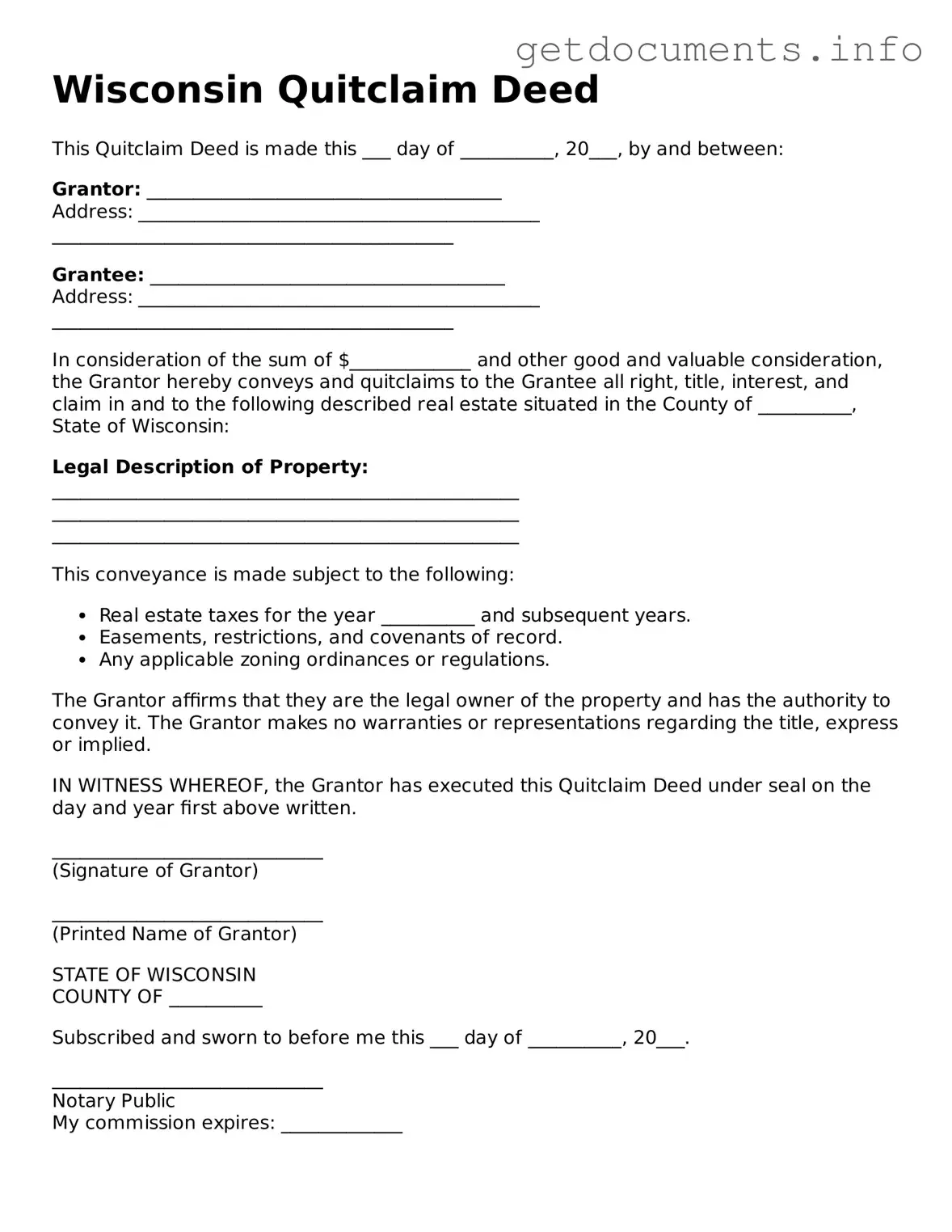The Wisconsin Quitclaim Deed serves as a crucial legal instrument for transferring property ownership, particularly when the granter seeks to convey their interest in real estate without making any guarantees about the title. This form is often utilized in situations where the parties involved have a pre-existing relationship, such as family members or business partners, allowing for a straightforward transfer of property rights. Unlike warranty deeds, which provide assurances regarding the title's validity, a quitclaim deed offers no such protections, making it essential for both parties to understand the implications of this type of transfer. The form requires specific information, including the names of the granter and grantee, a legal description of the property, and the date of the transfer. Additionally, the document must be signed and notarized to ensure its validity. Understanding the nuances of the Wisconsin Quitclaim Deed is important for anyone involved in real estate transactions, as it can significantly impact ownership rights and future property claims.
